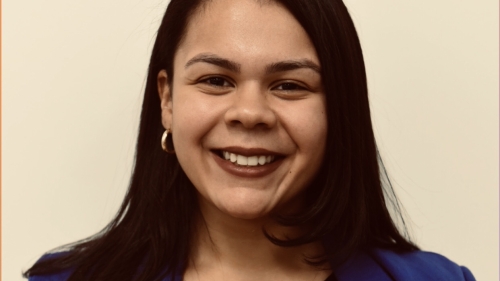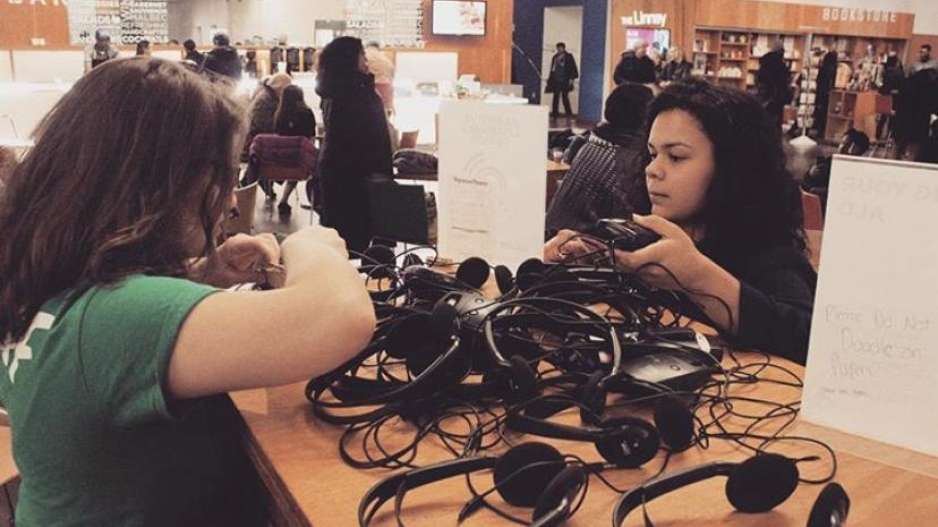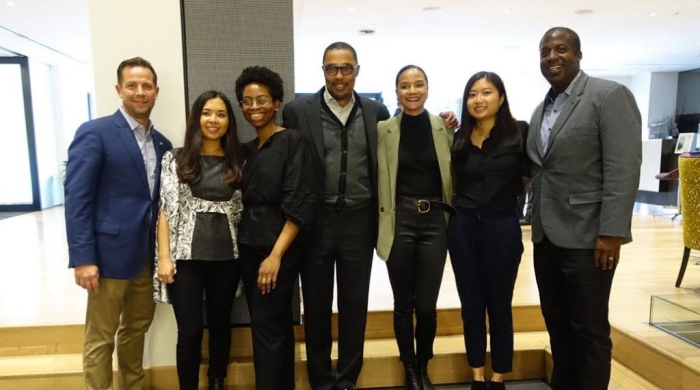
Destiny Lopez
In April, Destiny Lopez, a master’s candidate in the Department of Media, Culture, and Communication, took first place at NYU Steinhardt’s Eighth Annual Research and Scholarship Showcase for Accessible Sound: Creative and Integrated Media Accessibility for the Deaf and Hard of Hearing. A multimedia storyteller and creative strategist who hails from Waterbury, Connecticut, Destiny is passionate about creating accessible and inclusive media that amplifies the voices of marginalized communities. We asked her about her award-winning research.
How did your interest in media accessibility for the hearing impaired evolve?
I was diagnosed with sensorineural hearing loss in elementary school so I rely on hearing aids, lipreading, and captioning to properly hear and understand audio. Growing up, my step-father and I would watch sports and music videos that didn't require closed captions to be understood, so I never thought much of the inaccessibility of television. But, as a teenager, I started to watch more television series, like Ugly Betty and That 70's Show, and I realized that I missed major pieces of dialogue that were crucial to the plot. Eventually, I began to watch film and television only on Netflix because they used closed captions. Still, I desperately wanted to be able to watch live television, go to the movies, and be part of discussions that hearing individuals can have about the media.
I have always wanted to create a TV show or film with a deaf or hard of hearing (D/HoH) character, who would be accessible to the D/HoH audience. While I was abroad in Berlin last summer, I met up with my thesis advisor to attend a performance piece called (in)Visible by Jess Curtis. The piece explored performance for the blind and visually impaired by using sound and touch to convey 'visuals' to the audience. This inspired me to think of ways to visually deliver 'sound' for the D/HoH.
I desperately wanted to be able to watch live television, go to the movies, and be part of the discussions that hearing individuals can have about the media.
How did you conduct your research?
I started my thesis by researching legislation and the accessibility process for film, television, and theater. I found that distributors (the movie theaters, television networks and theater teams) were responsible for making content accessible rather than the creators or producers. This means that post-production, outside contractors, with limited time and funding are often deciding which sounds and tones are transcribed into captions (rather than the media's original creator). Making accessibility a footnote instead of an integral step in the production process, can lead to inaccurate or malfunctioning captions that take away from the media's intended message.
After sorting this out, I began looking at media could to find examples. I met with creatives and accessibility specialists in the United States and London to develop a contextual analysis of the current efforts to make theater, film, and television more accessible for the D/HoH.
What was your conclusion?
My research identifies what is being done and proposes three new methods for making media more creatively accessible: creative captioning, camera and actor-interaction and diverse casting, and inclusion of the D/HoH.

Destiny Lopez (at right) reviews amplification technology with an accessibility specialist at New York's Signature Theater
Related Articles
At Weber Shandwick, NYU Students Celebrate Capstone Projects
The PR Agency, Weber Shandwick, celebrated four Media, Culture, and Communication graduates at its New York City global office.
NYU in Top 10 for Media Studies
New York University claims the 9th spot in the QS Top Universities ranking of media studies programs worldwide.


